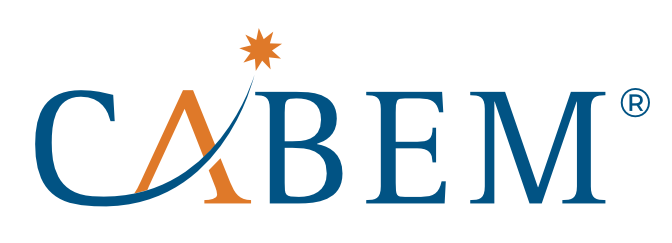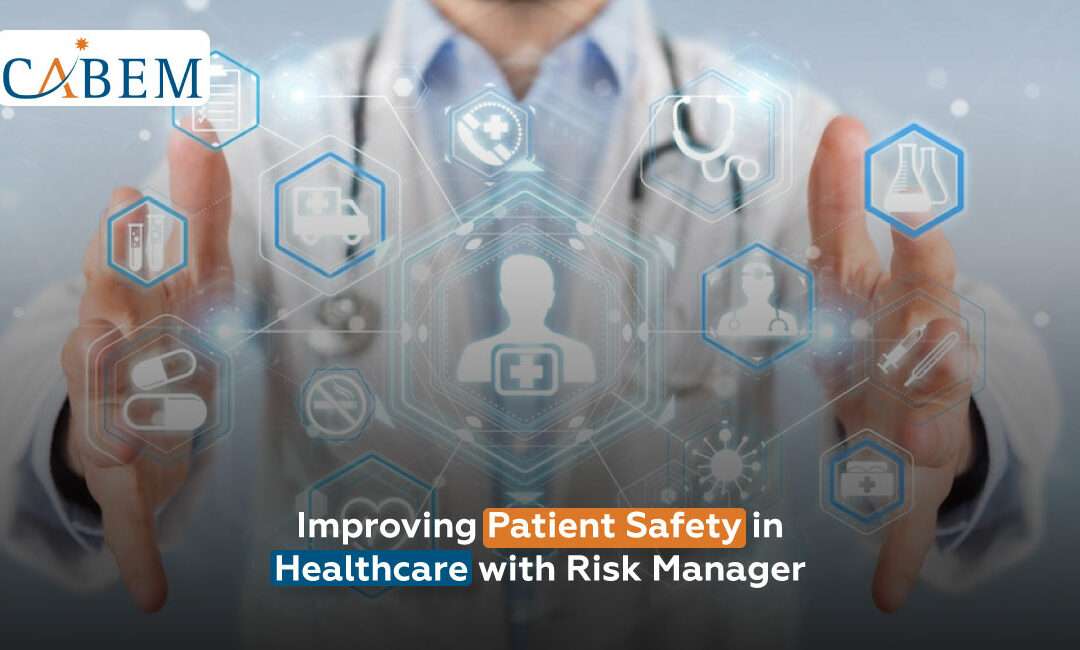Patient safety seems paramount in today’s highly competitive and continuously evolving healthcare industry. Mistakes, suboptimal performance, and regulatory nonadherence can put lives at risk and result in significant financial and reputational losses.
At CABEM, we acknowledge that to overcome these issues, it has been necessary to go beyond conventional methods. Our Risk Manager software provides healthcare institutions with the means that will enable them to efficiently identify, evaluate, and manage risks, thereby providing a safer environment for patients and personnel.
This blog focuses on risk management, its significance in healthcare, and how CABEM’s Risk Manager can enhance patient safety.
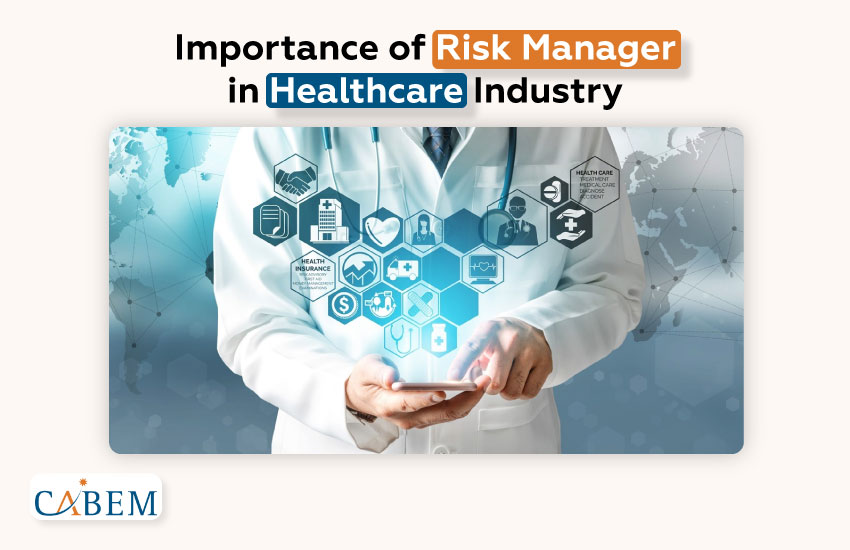
Importance of Risk Managers in the Healthcare Industry
Healthcare is a business on the edge where there can be little room for mistakes. Even a minor procedural error may result in adverse outcomes, with the patient’s well-being and the medical institution’s credibility at risk. Thus, Risk management is critical to ensuring patients are safe and healthcare operations remain sound alongside continuously emerging regulations.
Healthcare risk management is not an activity that merely completes regulatory checklists; it aims to protect lives and enhance the quality of delivered health services. Solutions like the CABEM’s Risk Manager are essential as they provide organizations with risk identification and assessment tools and help them create a safety culture.
Why Risk Management is Critical in Healthcare
Following are some of the challenges the healthcare industry faces frequently:
1. Preventing Medical Errors and Adverse Events
- Detect risks early: Risk management systems identify patterns and trends that can cause mistakes.
- Mitigate adverse events: Coping with risks assists in preventing occurrences like medication errors, surgical mishaps, and delayed diagnosis.
- Enhance patient outcomes: The preventive tools increase the quality of the services offered to patients, enhancing their health status.
2. Ensuring Compliance with Healthcare Regulations
Healthcare has one of the most stringent codes of regulation, which comes from various bodies, including the Joint Commission, CMS, and HIPAA—failure to comply results in severe penalties, loss of accreditation, and legal consequences.
- Streamline compliance efforts: Risk management systems create a coordination effort and consolidate documentation to meet requirements.
- Prepare for audits: CABEM’s Risk Manager is the tool that offers the convenience of audit-ready reports to smooth the compliance process.
- Avoid financial penalties: Risk management measures increase compliance, which helps avert fines and damage to reputation.
3. Enhancing Accountability and Transparency
Transparency is essential in healthcare organizations to maintain organizational trust from the patients.
- Foster a culture of safety: Risk management promotes a culture where individuals or teams can report occurrences of even minor errors without getting blamed.
- Promote organizational learning: Information about incidents highlights areas that need improvement and their prevention in the future.
- Build patient trust: Cherishing and implementing safety and quality care improves public gestures on health care providers.
The Role of CABEM’s Risk Manager
Among the evaluated tools and platforms, CABEM’s Risk Manager is a unique solution that can effectively cover these essential issues.
- Proactive Risk Identification: Identify risk factors before they become problematic and cut the chances of adverse outcomes.
- Centralized Data Monitoring: Keep track of incidents, training, and obligations in one place.
- Tailored to Healthcare Needs: The system has features that are fully compatible with healthcare needs, from incident reporting to corrective action tracking.
Supporting Facts and Statistics
- Preventable Adverse Events: The World Health Organization shows that about 80% of all HAIs (Health Associated Infections) are preventable through effective risk management strategies.
- Regulatory Penalties: For 2022, there were penalties of more than $28 million paid by healthcare organizations for their noncompliance with HIPAA requirements (source: US Department of Health & Human Services).
- Cost of Errors: Medical errors involving the legal system cost €17 billion–€29 billion a year in total legal and medical expenses and lost productivity. (source: NIH: National Library of Medicine).
Implementing risk management strategies can help healthcare organizations design safer systems, require fewer resources, and foster community confidence. CABEM’s Risk Manager has the experience and tools that make this possible.
For thorough information about healthcare compliance and credentialing, please visit our informative post titled “Healthcare Compliance and Credentialing.” Learn how proper credentialing models can protect your organization and improve the safety and quality of patient care. Keep browsing for more relevant insights, especially for healthcare professionals!
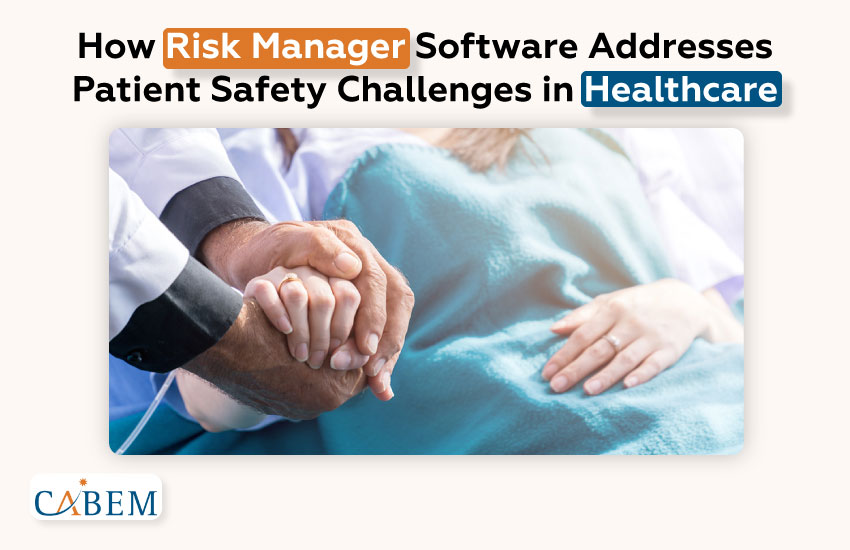
How Risk Manager Software Addresses Patient Safety Challenges in Healthcare
Patients’ safety is always a priority, but achieving it involves overcoming numerous challenges. But what strategies can healthcare organizations implement to identify, evaluate, and manage risks while ensuring operational efficiency? Risk Manager software can be helpful here. It allows for timely problem-solving and anticipation of potential dangers.
In the sections below, we will illustrate specific difficulties potentially encountered by healthcare providers and how Risk Manager software helps overcome these obstacles to improve safety, compliance, and efficiency. Are you ready to meet the updated tools that can reinvent healthcare risk management? Let’s dive in!
1. Inefficient Risk Assessment Processes
Conventional risk assessments tend to involve inefficient paperwork and appendices. However, CABEM’s Risk Manager simplifies risk identification, categorization, and prioritization using tools that help efficiently.
- Automated risk identification: Reduces reliance on human skills and increases the rate of risk assessment.
- Comprehensive risk matrices: it is easy to prioritize according to the level of risks depending on their rating.
- Customizable frameworks: Guarantee that risk evaluations are consistent with management objectives.
2. Lack of Real-Time Data Monitoring
In healthcare, early information can make a significant difference between calamity and prevention. Manual monitoring procedures are generally slow, and therefore, institutions are always at risk of new emerging risks.
- Real-time dashboards: Offer updates about incidents in a real-time fashion.
- Alerts and notifications: They enable one to give instant attention to relevant concerns.
- Data visualization tools: Facilitate the process, resulting in faster decision-making.
3. Human Errors and Communication Gaps
- Centralized communication platforms help organize the flow of information within organizational units.
- Incident reporting systems: Are flexible and allow the staff to report or even take their concerns to higher levels.
- Audit trails and documentation: Enhance accountability and create transparency.
4. Compliance Issues with Healthcare Regulations
Compliance standards like HIPAA, OSHA, and CMS can be tedious and confusing for healthcare providers. Failure to comply can result in penalties, fines, accreditation loss, and reputation tarnishing.
- Automated compliance tracking: Enhances the organization’s ability to meet all legal requirements and best practices.
- Policy management tools: Ensure policy documents are current and readily available to policy staff.
- Regulatory reporting features: Help with ease of submission and audit.
Please read our blog: Why Every Healthcare Facility Needs a Competency Manager in 2024. Learn why competency management is such an exciting solution to enhance the quality of staff work and patient outcomes.
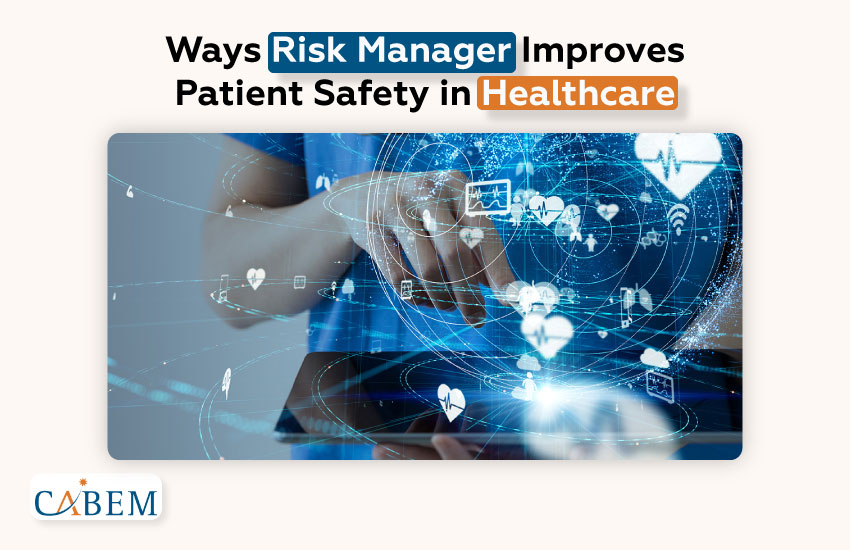
5 Ways Risk Manager Improves Patient Safety in Healthcare
Patient safety is not just about managing problems when they arise but using processes to ensure that issues do not occur in the first instance. CABEM’s Risk Manager distinguishes itself by identifying risks and developing recommendations that could be capitalized on for positive change. But how does it work in this respect?
In the following section, we’ll describe five critical areas where the risk manager facilitates healthcare organization safety, liveliness, and compliance with regulatory standards. Are you interested in how this can revolutionize your institution’s stance on patient care? Let’s take a closer look.
1. Identifying Potential Hazards Proactively
CABEM’s Risk Manager is a tool that entails data analysis and automation to identify possible risks in healthcare institutions before they result in significant occurrences.
- Predictive analytics: Rely on past events to forecast risks in the future.
- Risk heat maps: Point out areas that require management attention.
- Near-miss tracking: Contributes to preventative developments.
2. Enhancing Incident Tracking and Response Times
In the healthcare setting, a fast reaction to the occurrences is essential. Regarding reporting and resolving issues, the risk manager eliminates any delay that can be encountered.
- One-click incident reporting: One-click reporting enables staff to report issues easily.
- Root cause analysis tools: Allow for detailed assessments to be carried out.
- Automated workflows: Help assign tasks and track solutions in real-time.
3. Promoting a Culture of Safety and Accountability
Employment and accountability remain critical foundations for developing a safety culture within organizations. Risk manager also enhances patient safety across the healthcare entity, as it is a shared responsibility.
- Blameless reporting systems: Help to promote communication of issues within the staff without fear.
- Collaborative dashboards: Lead to enhanced team commitment and identification of challenges.
- Safety training modules: Have the functionality of complementing risk handling well.
4. Reducing Medical Errors Through Data-Driven Insights
It is impossible to eradicate errors made by human beings, but their consequences can be reduced through proper tools. The risk Manager provided by CABEM has valuable recommendations that can be applied and allow the organization to improve constantly.
- Error trend analyses: Point to areas that require intervention and improvement.
- Customizable reporting tools: Provide information within a flexible and easy-to-use format.
- Feedback loops: Bring the learnings into the newly revised process.
5. Ensuring Regulatory Compliance to Avoid Penalties
Healthcare organizations’ penalties for failure to comply are relatively high. Risk Manager assists you in preparing for regulations by offering aspects of compliance that would be easy and automatic.
- Built-in compliance templates: Addressed many of the specifics required by regulation.
- Audit-ready documentation: Helps you be ready for audits at any time.
- Regular updates: Make the system more responsive to the modifying laws and set standards.
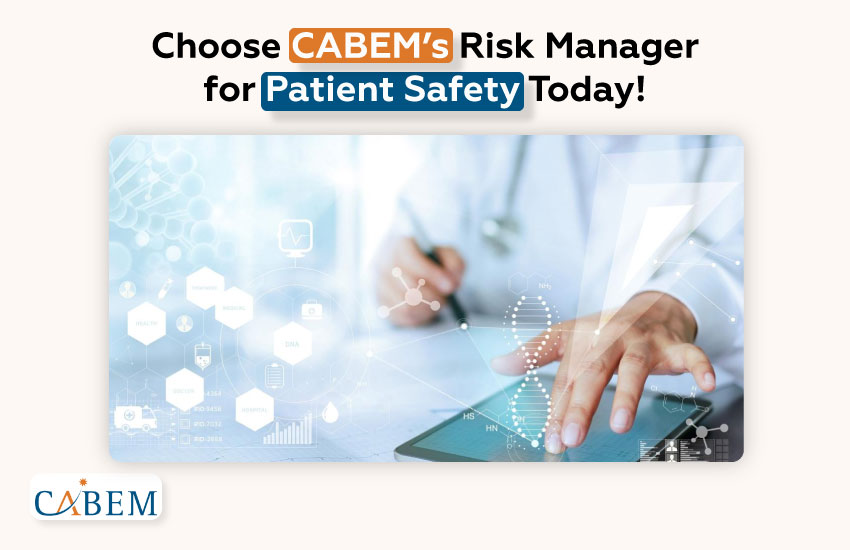
Choose CABEM’s Risk Manager for Patient Safety Today!
Patients’ safety should always be a priority, and they should not be allowed to rely on mere luck. CABEM’s Risk Manager is supposed to equip healthcare institutions with tools to identify, manage, and control risk adequately.
Compared to other programs, our software provides real-time analysis and evaluation, automatizes risk management processes, and collects all the related actions in one place.
CABEM enables users to manage risks and focus on safety and constant enhancement.
Key benefits of choosing CABEM’s Risk Manager:
- Flexible, comprehensive risk management systems.
- Ability to integrate with other established systems within the organization.
- Real-time data analysis and monitoring of activities.
- Consistent legal assistance and compliance service.
- Increased interdepartmental cooperation.
Are you ready to change how you think about patient safety? You can try a demo at CABEM right now and find out how a Risk Manager can help transform the general operations of your healthcare.
FAQs
1. How is CABEM’s Risk Manager better than traditional risk management practices?
CABEM’s Risk Manager helps to manage risks effectively and systematically by providing an up-to-date analytical tool, multiple frameworks, and compatibility with other systems. It enables you to avoid shortcomings such as paperwork and enhances a company’s safety culture.
2. Can CABEM’s Risk Manager help with compliance and regulations like HIPAA?
Absolutely. CABEM’s Risk Manager has features that monitor compliance with HIPAA, OSHA, CMS, etc. Its automated reporting, policy management, and audit-ready documentation help you remain complaint-free without much effort.
3. How does CABEM’s Risk Manager proactively identify and mitigate risks?
The software applies predictive analytics of incidents that can help to determine the threat level before they become critical. It also simplifies the tracking of the corrective actions and the evaluation of their efficiency in the future.
